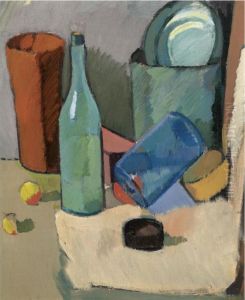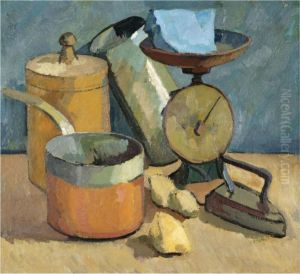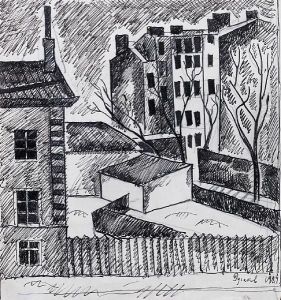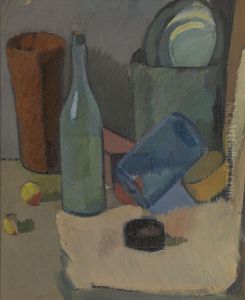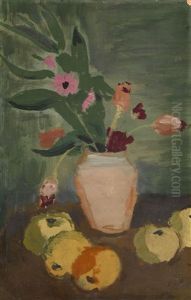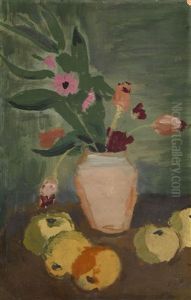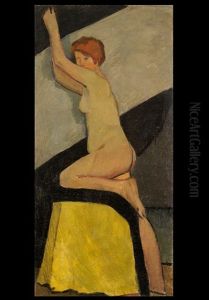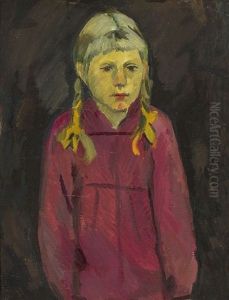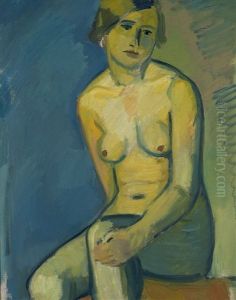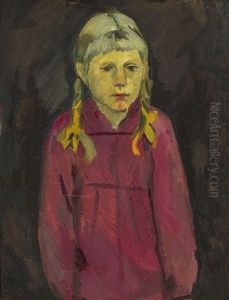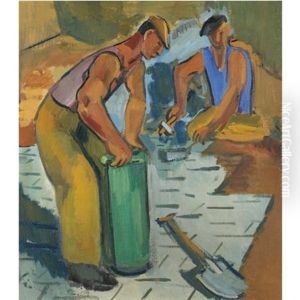Aleksander Isaakovich Rusakov Paintings
Aleksander Isaakovich Rusakov was a Soviet artist born on July 16, 1898, in the city of Saratov, Russia, which was then part of the Russian Empire. He is best known for his work in the constructivist and suprematist styles, which were prominent among avant-garde artists in Russia during the early 20th century.
Rusakov's artistic career began in the tumultuous years of the Russian Revolution and the subsequent Civil War. He moved to Moscow, where he became associated with the constructivist movement, an artistic and architectural philosophy that emerged in Russia following the Bolshevik Revolution of 1917. This movement was characterized by an emphasis on modernity, abstraction, and the use of industrial materials. Rusakov, like other constructivists, believed that the artist could play a significant role in the construction of a new society.
Throughout the 1920s, Rusakov worked on a number of projects, including theater set designs, exhibition layouts, and graphic design. His work often featured geometric shapes, a limited color palette, and a focus on the materiality of the objects he created. He was also involved in teaching, joining the faculty of the Higher Art and Technical Studios (VKhUTEMAS), which was later transformed into the Higher Art and Technical Institute (VKhUTEIN). These institutions were central to the development of Russian avant-garde art and architecture.
As the 1930s progressed, the political climate in the Soviet Union became increasingly hostile to avant-garde art, which was seen as bourgeois and incompatible with the Socialist Realism that Joseph Stalin's regime was promoting. During this period, many avant-garde artists faced repression, and their work was marginalized or condemned. Rusakov's career was also affected by these changes, and he had to adapt his style and subject matter to fit the more conservative artistic guidelines of the time.
Aleksander Isaakovich Rusakov's life was cut short during the Second World War. He was killed during the Siege of Leningrad, one of the most devastating episodes of the war for the Soviet Union, which resulted in the deaths of hundreds of thousands of people due to starvation, bombardment, and other wartime hardships. Rusakov died on February 9, 1942, leaving behind a legacy that would be re-evaluated and appreciated more fully in the post-Soviet era, as interest in the Russian avant-garde was revived among art historians and collectors worldwide.
